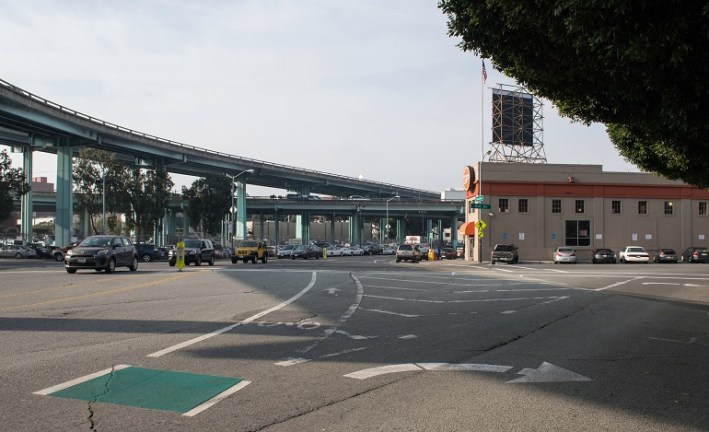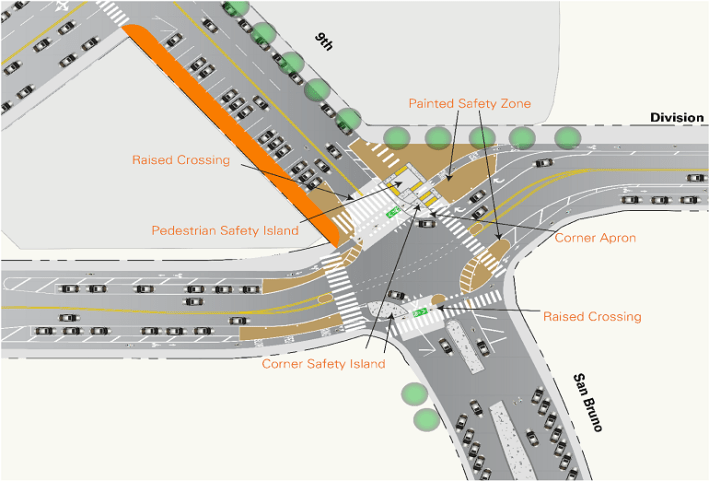
SFMTA announced late last week that San Francisco will soon break ground on the first protected intersection in San Francisco. From the agency's web article:
A new type of safer intersection design for San Francisco breaks ground this week: The city’s first “protected intersection” treatment is coming to 9th and Division streets.
Protected intersections use a simple design concept to make everyone safer. Under this configuration, features like concrete islands placed at the corners slow turning cars and physically separate people biking and driving. They also position turning drivers at an angle that makes it easier for them to see and yield to people walking and biking crossing their path.
Anyone who knows the large urban bike capitols of the world knows that even wide and busy motorways can incorporate safe bike infrastructure. Protected bike lanes are key. But really making bicycling safe for all ages requires their counterpart: the protected intersection.
If you're not familiar with how protected intersections work, this video from the Bicycle Dutch blog explains it well with animation:
And this explains it with graphics and live action of the junctions in operation:
As the videos show--and any San Francisco cyclists can attest to--intersections are where Bay Area traffic planners seem to fall down on the job. One of the videos even uses Market Street to illustrate bad design. Even where there are protected bike lanes, as soon as there's a junction, the bike lane ends, and cyclists are thrown right into traffic. That means right hook collisions, left hooks, and cyclists getting side swiped. And, sadly, intersections are where most serious injuries and fatalities occur.
There are only a handful of protected intersections in North America. The nearest one is in Davis. Anybody who gets an opportunity should try it out and report back; even the best videos and diagrams still might leave cyclists scratching their heads about what it's like to navigate one. Streetsblog has ridden protected intersections in the Netherlands and Vancouver; they are intuitive and relaxing. The engineering makes it so that an inattentive driver making a turn is more likely to hit a curb before they get the opportunity to hit a cyclist or pedestrian.

The designs, as the videos point out, are also great for pedestrians, because the crosswalks are set back from the intersection. SFMTA added raised crosswalks (also sometimes called combination crosswalk-speed bumps) to the concept. These force drivers to slow down and are a welcome addition to San Francisco's streets.
It's kind of odd, however, that SFMTA's design doesn't protect cyclists going north-south. "The primary vehicle-bike crashes we saw at this intersection were right-hooks, which our design is solving for," explained Ben Jose, a spokesman for SFMTA. "The intersection is protected in the east-west direction. To make a left turn, a person biking can either make a two-stage turn and stay in the shadow of the islands, or take the vehicle lane before they enter the block." This seems to follow the Vision Zero philosophy of using data to address the most frequent and harmful crashes. Still, as long as they are building a protected intersection for one direction, why not do both?
That said, Streetsblog hopes--in the future--protection will be required for any intersection with the traffic volume to warrant it.





